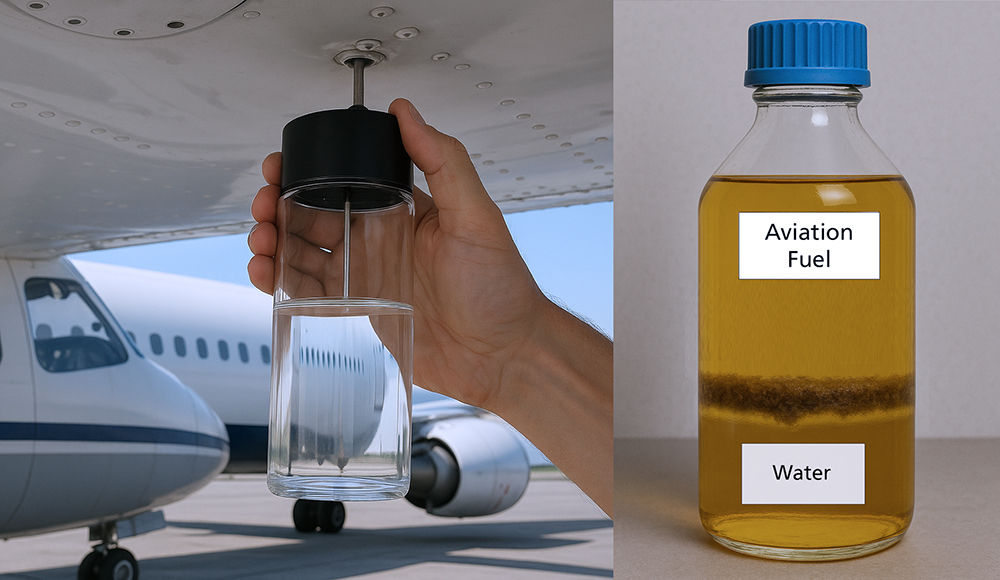Microbially contaminated fuel: A safety risk in aviation
Microbially contaminated fuel poses a serious threat to aviation. Condensation or inadequate storage can lead to the formation of water in the tanks. The resulting water phase provides an ideal environment for the growth of microbes such as the fungus Hormoconis resinae (also known as kerosene fungus) and bacteria. These microorganisms can cause corrosion and form biofilms, which can in turn lead to leaks and blockages in fuel lines, filters, and pumps, resulting in performance losses or even engine failure.
To detect harmful contaminants from microorganisms in a timely manner and to implement appropriate countermeasures, regular monitoring of the micro-biological contamination of fuel is essential. There are four test methods that allow for a quantitative or semi-quantitative assessment of contamination. The first method is based on the cultivation of microorganisms, whereby the total number of viable colony-forming units can be counted by laboratory personnel. The second method involves testing for adenosine triphosphate (ATP), a biochemical compound produced by all living organisms. Another test method is based on an immunoassay to examine the sample. This involves testing reagents for biomarkers specific to the microorganisms that are associated with the contamination. The fourth test method is based on the molecular determination of microbial genome, gene activation, proteins, or metabolic activity. qPCR is one of the typical molecular analysis techniques known for its specificity and quantitative results. The IATA (International Air Transport Association) is currently supporting a program to develop new recommendations for testing methods. This is due to the need, resulting from airline experience, to re-evaluate technologies already used in commercial test kits as well as new testing procedures.
 Fraunhofer Institute for Microengineering and Microsystems IMM
Fraunhofer Institute for Microengineering and Microsystems IMM
